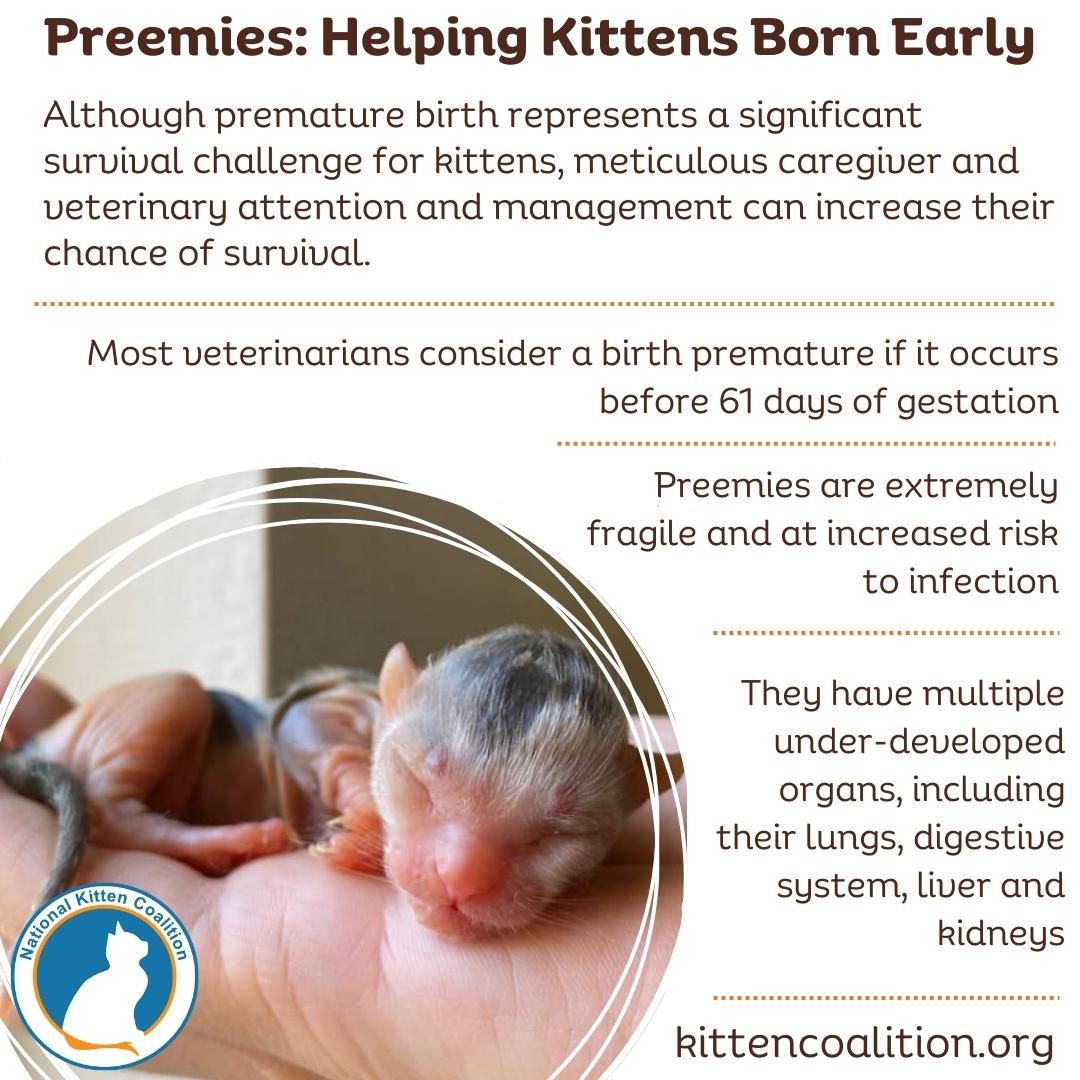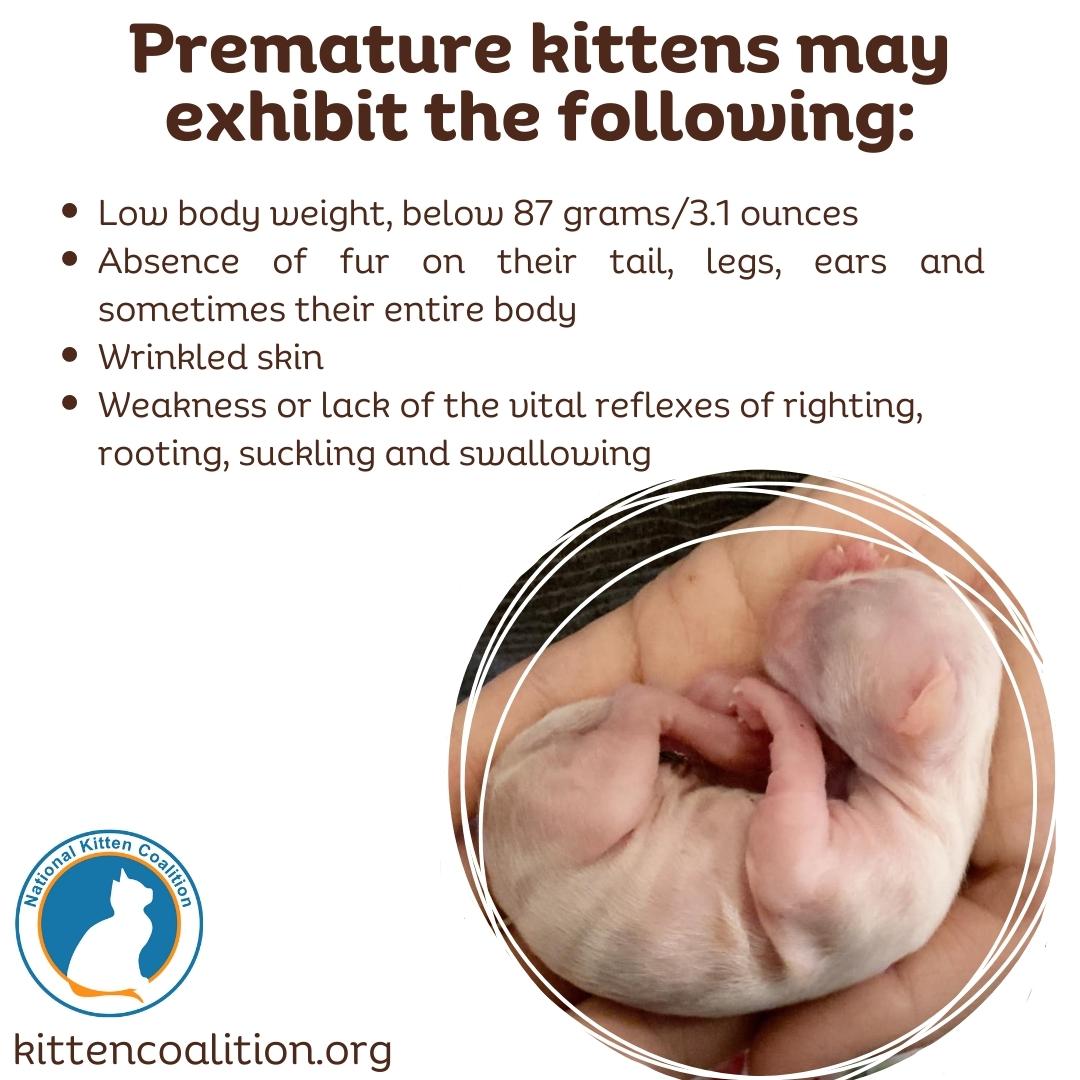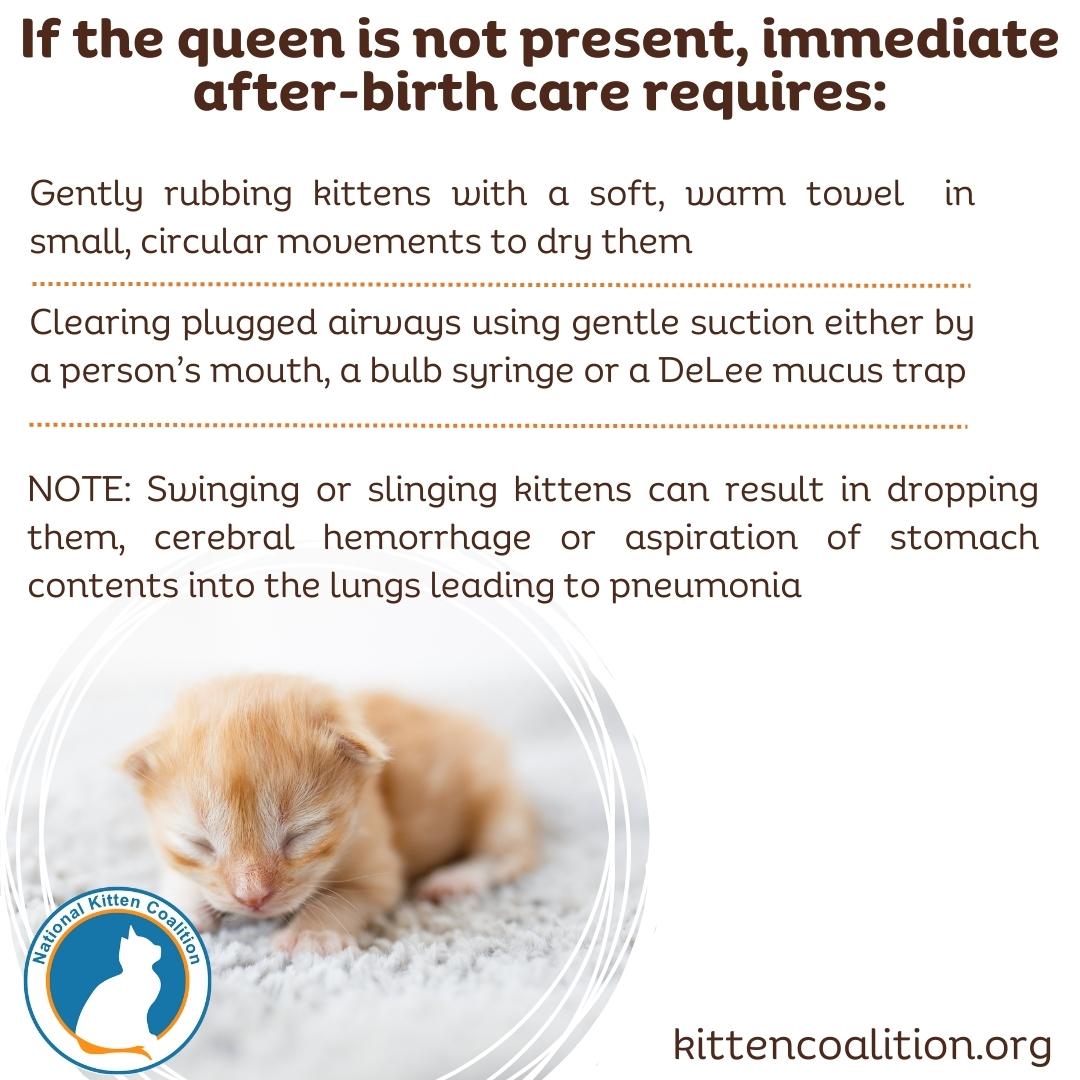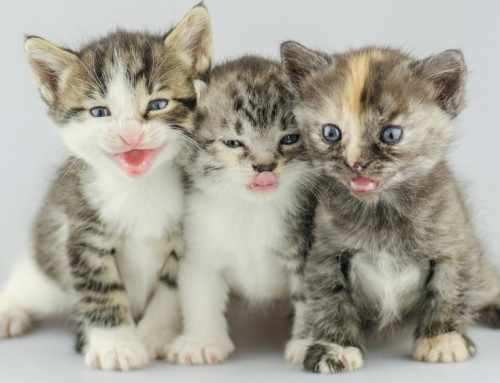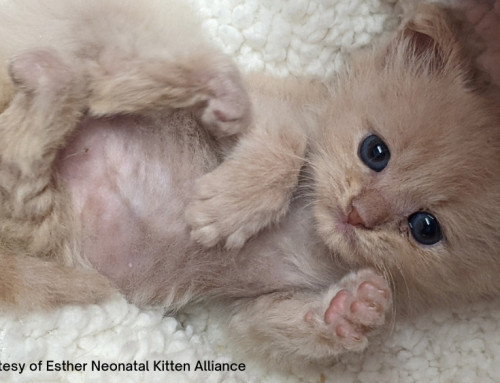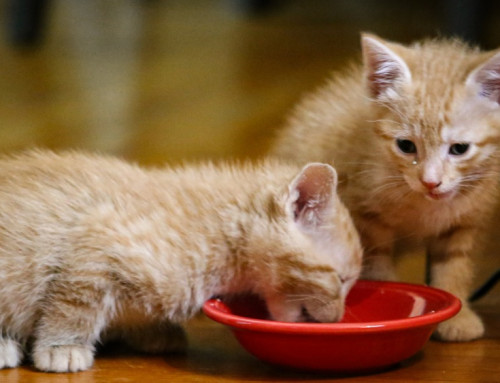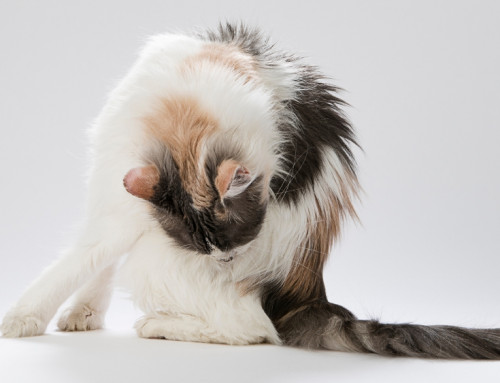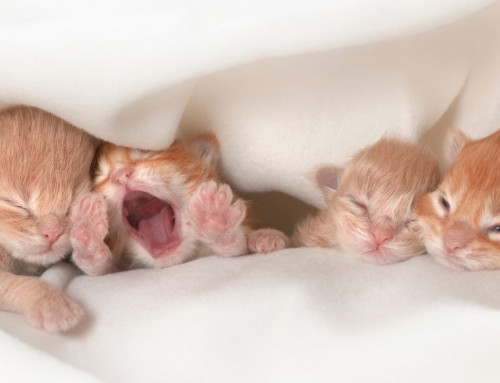Share this resource or email it to a friend!
Kittens are born blind, deaf, unable to regulate their body temperature and dependent on their mother. Orphaned neonates require intensive caregiver attention, which increases immensely if they are born prematurely.
Premature Birth in Kittens
Most veterinarians consider a birth premature if it occurs before 61 days of gestation. Chances for survival decrease rapidly for kittens born more than 5 days premature, and, if birth occurs 2 weeks or more before 61 days, survival is not expected.
Preemies are extremely fragile and at increased risk to infection. In addition, they have multiple under-developed organs, including their:
- Lungs will lack surfactant, a fluid secreted by the alveoli (air sacs in the lungs that exchange oxygen and carbon dioxide), which reduces the surface tension of pulmonary fluids, contributes to the elastic properties of pulmonary tissues and prevents the alveoli from collapsing
- Digestive System will be unable to absorb the necessary nutrition from milk or formula and the suckling reflex may be poor or absent
- Kidneys will be limited in their ability to maintain electrolyte and the acid/base balance within the body
- Liver will be limited in its ability to synthesize protein, produce the chemicals necessary for digestion and remove toxins from the body
The Causes of Premature Birth of Kittens
Queens may experience premature contractions leading to preterm births due to:
- Viral or bacterial infections
- Receiving vaccinations while pregnant
- Environmental Stress, such as entering a shelter or rescue
- Malnutrition
- Hormonal imbalances
- Noninfectious uterine or vaginal disease
- Ovarian cysts
- Injury
- Genetics
The Signs of Premature Birth in Kittens
Recognizing premature kittens is vital to their survival. Signs include:
- Low body weight below 87 grams/3.1 ounces. Full-term kittens weigh between 85-110 grams/ 2.9-3.9 ounces, with the average weight being 99 grams/3.5 ounces
- Absence of fur on their tail, legs, ears and sometimes the entire body
- Wrinkled skin
- Weakness or lack of vital reflexes of righting, rooting, suckling and swallowing, which enable kittens to reach a nipple and attain the correct position for nursing within seconds
The Care of Preemies Immediately after Birth
Under normal birth conditions, the queen opens the fetal membranes, severs the umbilical cord and licks newborns to stimulate respiration, remove fetal fluids and ensure the newborns dry. Her licking of the anal region and external genitalia is also necessary to stimulate urination and defecation.
If the queen is not present to dry preemies and stimulate breathing, dry kittens with a soft, warm towel, gently rubbing in small, circular movements mimicking a queen’s licking. Plugged airways (back of the mouth and nostrils) may require gentle suction either by a person’s mouth, a bulb syringe or a DeLee mucus trap so that kittens take their first breath effectively without too much fluid. Although bulb syringes are useful to remove some thick mucus in the back of the mouth, a DeLee mucus trap is more effective in removing the watery fluid that can cause a lot of congestion in kittens’ airways.
NOTE: Swinging or slinging kittens is not recommended to clear the airways. It can result in dropping the animal, cerebral hemorrhage or aspiration of stomach contents into the lungs leading to pneumonia. If preemies are unable to completely inflate their lungs, hypoxia (low oxygen level in blood and tissues) ensues and will require immediate veterinary treatment before respiratory arrest occurs.
The Prevention/Treatment of Hypothermia in Preemies
Warming preemies is the next important step. They are predisposed to hypothermia (low body temperature) because they cannot thermoregulate and have a large surface area to body mass ratio and lack insulating fat. Hypothermia is particularly dangerous as it can result in decreased heart and respiratory rates, which lead to cardiovascular failure. Also, hypothermic kittens fail to suckle effectively, which leads to low blood glucose levels (hypoglycemia) and deprives the body of energy, resulting in unconsciousness and ultimately death. Hypothermic kittens feel cold, are limp and have low blood pressure, slowed circulation and pale and then purplish/bluish lips, tongue and gums, areas of the skin where the blood vessels are superficial and foot pads.
Normal neonatal rectal temperature ranges from 95°-99°F/35°-37.2°C. Hypothermic preemies need to be slowly warmed to a rectal temperature of 97°-98°F/36.1°-36.6°C over a period of one-three hours. Rewarming them too rapidly increases their metabolic demand and can cause pulmonary and circulatory collapse.
Environmental warmth (a minimum nest ambient temperature of 90°-95°F/32.2°-35°C) and an ambient room temperature of 75°F along with proper humidity (near 60 %), are essential for maintaining kittens’ temperature and hydration simultaneously.
There are numerous ways to warm preemies. An incubator is ideal, however there are other options such as certain bird brooders and intensive care units and DIY incubators (reptile enclosures, plastic tote bins, etc.).
Heating pads, microwaved rice bags, water bottles, Snuggle Safe® discs and infrared heat lamps can be used, but extreme care must be utilized to ensure that preemies do not become hyperthermic (overheated) or burned. It is imperative that preemies are able to move away from the heat. Increasing humidity can be accomplished by using an inexpensive room humidifier or simply by placing water-filled containers near a heat source or a window.
The Care of the Umbilical Cord of Preemies
Leave umbilical cords intact and do not remove any remnants of placenta. They will dry and fall off within the first 7-10 days. Removing the cord can lead to hemorrhage and hernia or can introduce infection, which could prove fatal. Keeping the umbilical cord stump clean with tincture of iodine or betadine will help prevent omphalitis, an infection of the umbilical cord that can lead to peritonitis (infection in the abdomen), sepsis and even death.
The Prevention/Treatment of Dehydration in Preemies
Preemies are exceedingly prone to dehydration because of immature renal (kidney) function. The usual skin tent test assessment is not reliable because of their decreased fat content. Dehydration can be judged by evaluating the gums, which should be moist and not tacky or pale, assessing the ability to urinate and the color of the urine, which should be very pale yellow and judging the overall condition of the kitten.
Initially an electrolyte solution of Lactated Ringers with 50% Dextrose at a 2:1 ratio (or 3 tablespoons of unflavored dark Karo syrup in ½ cup unflavored Pedialyte solution) can be given orally to kittens at 1 ml/100 grams body weight every 20-30 minutes until the kitten is rehydrated and can urinate when stimulated. Fluids should be warmed to 95°-99°F/35°-37.2°C before they are given by any route to prevent hypothermia. Contact a veterinarian in cases of severe dehydration.
Passive Immunity in Preemies
Less than 5% of maternal antibodies are passed through the placenta to the developing fetus. Therefore, colostrum must be ingested by the neonate within the first 24 hours (after that time the digestive tract will no longer absorb colostrum) to acquire passive immunity from the queen. Without it, kittens have a serious immunological disadvantage. Serum can be administered to preemies via a feeding tube in the amount of 15 ml/100 grams of body weight (divided into multiple feedings) in the first 12-16 hours and up to 24 hours of age.
The Nutritional Requirements of Preemies
During the first week to ten days of life, preemies require frequent feeding every 30-60 minutes. Kittens born 6 days or earlier than the due date and/or with a body temperature of 94°-95°F/34.4°-35°C should be tube fed. Body temperatures less than 94°F-34.4°C lead to bradycardia (low heart rate) and lack of gastrointestinal peristalsis (muscle contractions that move food through the digestive tract), and any fluids given orally cannot be properly absorbed. Veterinary intervention at this juncture is indicated.
Formula can be started once preemies have a body temperature greater than 95°F/35°C). Kitten milk replacement formula is mixed in graduating ratios of water-to-replacement to ease the transition to bottle feeding and prevent diarrhea, which commonly occurs whenever there is a change in diet. It is recommended that the first four feedings are at a ratio of 8:1, eight parts water to one part replacement. The second four feedings are at a ratio of 4:1 and all other bottle feedings are at a ratio of 2:1. Remember that maximum comfortable stomach capacity is 4 ml/100 grams body weight. Avoid filling the stomach to capacity to help prevent any aspiration. Feeding every two to four hours is ideal.
The Elimination Requirements of Preemies
Preemies must be stimulated to urinate and defecate either by the queen or caregiver. Although urination occurs at each stimulation, a kitten typically defecates only once every 12-24 hours. Stimulating orphan preemies to urinate and defecate and keeping them clean is as important of a job as feeding. Each kitten is an individual and will respond differently to stimulation techniques, the most common being the use of a wet or dry tissue, cotton ball or cloth to gently pat/rub the perianal area in a circular motion. Stimulation should continue until the bladder and colon are both empty.
Important note: it is a best practice to stimulate for urination and defecation prior to feeding to prevent abdominal discomfort; some kittens will require stimulation again after feeding. For kittens who are difficult to stimulate, the addition of running warm water on to the perianal area during stimulation can be useful.
The Emotional Requirements of Preemies
Warmth and touch are especially important for the development of preemies. A product such as Snuggle Kitty™ or Calmeroos® may ease loneliness, fear and separation anxiety by mimicking maternal intimacy with warmth and heartbeat. It is best to provide ample soft bedding such as fleece material for kittens to burrow into as they would naturally in a nest made by the queen; fleece guinea pig beds or caves are a perfect size for premature kittens. It is also best to mimic a queen’s grooming with a toothbrush before, during or after feeding. Keeping kittens with their littermates whenever possible is also important for emotional health and development.
Although premature birth represents a significant survival challenge for kittens, meticulous caregiver and veterinary attention and management can increase their chance of survival.


